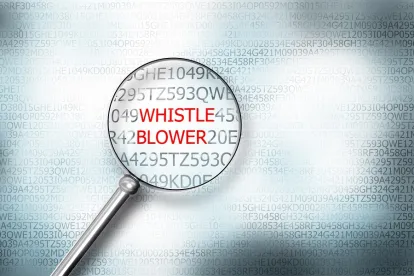Admittedly, an employee is more likely to bring a claim against their employer; after all, usually it is the one with the cash. But as last month’s case of Timis and another v Osipov shows, that need not always be the case.
Mr Osipov was the CEO of International Petroleum Ltd (IPL). He made a number of protected disclosures generally related to corporate governance and compliance with foreign law and was later dismissed, the principal reason for which (the Employment Tribunal ruled) was that he had made those disclosures. In other words, he was sacked for blowing the whistle and was therefore found automatically unfairly dismissed.
Osipov brought claims in the Employment Tribunal against not only IPL but also two non-executive directors who were instrumental in his dismissal: Mr Timis (the decision-maker) and Mr Sage (who pulled the trigger). Not only did the Tribunal find that Osipov had been unfairly dismissed by IPL, but it also found that Timis and Sage had subjected him to a detriment by their conduct in relation to the dismissal. They were held jointly and severally liable with IPL for compensation amounting to a whopping £2 million. [“Joint and several” in this context meant that if for any reason IPL could not pay, Timis and Sage were on the hook for the full amount.] That was a real risk, as IPL was by then insolvent. But can individuals be liable for losses arising from what is essentially a corporation action, i.e. the dismissal especially, as here, if they are non-execs? After all, an individual who is not the employer cannot be held liable for unfair dismissal even if it was entirely his doing. However, Osipov sued them not for unfair dismissal (for that reason) but for subjecting him to a detriment for whistleblowing under s47B Employment Rights Act 1996.
The case made its way up to the Court of Appeal where the two directors’ arguments lay in the wording of section 47B(2) Employment Rights Act 1996. This provision excludes detriment claims where “the detriment in question amounts to a dismissal”. In such circumstances, they said, the correct course of remedy was a claim for unfair dismissal, which could only be brought against an employer. Sage also argued that in any event, he couldn’t be liable in relation to any instruction to dismiss Osipov because it was Timis who made the decision and gave the instruction and he had merely obeyed.
Nice try. The Court of Appeal ruled that an employee is free to bring a claim for detriment against an individual co-worker for subjecting them to the detriment of dismissal. All that section 47B(2) excludes is a claim against the employer in respect of its own act of dismissal because that is dealt with in the automatic unfair dismissal provisions at s.103A. To conclude otherwise would not only make the scheme of protection for whistleblowers less effective than for victims of other kinds of discrimination and victimisation, but would also produce an incoherent and unsatisfactory result, it said.
The Court also made it clear that section 47B(2) “places no barrier to recovery of compensation for losses flowing from a dismissal which was itself caused by a prior act of whistleblower detriment”. This means that losses flowing from an act of detriment may include those stemming from a causally-connected subsequent dismissal.
As for the assertion that Sage was only the mouthpiece in dismissing Osipov, the Court of Appeal rejected this submission on the facts and emphasised that it is not uncommon for more than one person to be involved in a decision to dismiss. One person may take a more prominent role but that doesn’t diminish the responsibility of the other participants.
Timis and Sage had the benefit of director’s liability insurance, but that won’t be true for all individuals held personally liable. There may be less incentive for bringing such substantial claims against co-workers without insurance, but it is important to note the potential exposure here for less senior employees too.
Lessons for Employers
-
If any steps need to be taken in respect of an employee who has made a protected disclosure, for example, performance management or unrelated disciplinary proceedings, ensure they are handled with care, well documented by those involved and that the reasons for such actions are set out clearly. The best defence is to show that the reason for the detrimental action taken by management or HR is unrelated to the disclosure.
-
The findings against Sage were made because it was held that he was (a) involved in making the decision to dismiss and (b) aware that it was in response to Osipov’s disclosures. This case does not pose a threat to individual managers and HR staff carrying out dismissals on the instruction of more senior executives where they have no role in the decision and no knowledge of the real reason for the termination.
-
The case does however up the stakes for small businesses where the manager is in effect (though not legally) the employer. They will no longer have the ability to incur substantial liabilities for a whistleblowing dismissal but escape personal exposure by letting their company take the hit and/or go into liquidation.
Hannah Field contributed to this post.



 />i
/>i
